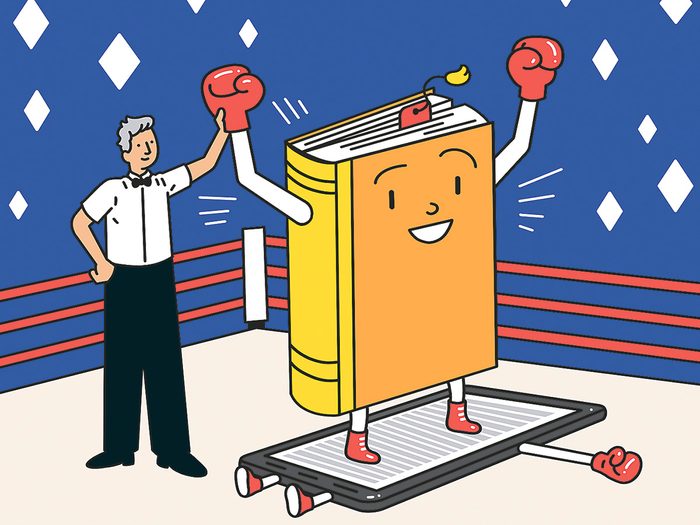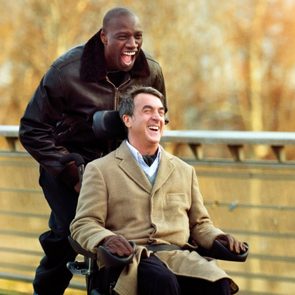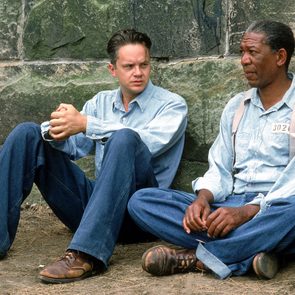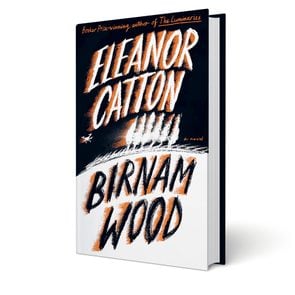Why Printed Books Are Simply Better Than E-Readers

Technology may have taken over, but fans of old-fashioned books know a well-stocked bookshelf will always reign supreme.
The printed book is back. Recent studies have shown that students retain more information when they read a hard-copy book, compared to reading on a digital device.
One school near where I live responded to these findings by ditching its e-readers. The students found, according to a teacher, that “the ease of navigation” was superior when using a traditional book.
I love the way we now judge printed books using the language of the digital world. E-books may come with a “suite of navigational tools,” but it turns out that the best navigational devices are your forefinger and thumb. You can use them to flip the pages forward and backward. To think, all this time, those devices have just been just sitting there, dangling at the end of your arm.
Fans of digital books may point out that e-readers have a handy “search” tool. Old-fashioned books also have a search function, in which you turn back to the opening chapter to remind yourself of the hero’s surname. They even have a “bookmark system,” which uses a device called a “bookmark.”
Can a traditional book offer all the features of an e-book? Alas, no. It lacks a “progress bar” indicating what percentage of the book has been read. Luckily, a “hack” is available: Turn your book so that it can be viewed from the side or top. It will naturally form two halves joined in the middle (“the spine”). If the left-hand chunk is thicker than the right-hand one, you are more than halfway through.
Fans of the e-book point out that digital text is easy to annotate. Some devices even feature a little image of a pencil to guide the reader through the process. Traditional-book users have a similar system called a “pencil.” With it, favoured passages can be underlined and, if it’s a history book, pretentious comments can be written in the margin, such as “Not so, according to The Decline and Fall of the Roman Empire.”
Thus annotated, such books can be left around for others to peruse, convincing family members, or prospective lovers, of your intellectual perspicacity.
Admittedly, e-books are lighter than paper volumes, but one must question whether this is really an advantage. In secondary school my physique was transformed by the daily need to carry science textbooks. For me and my fellow students, placing these weighty tomes in our backpacks would draw our shoulders back and our chests forward in a way that turned the school into the equivalent of a military parade ground.
The printed book, of course, has other advantages. A full bookshelf is at once a sound baffle and a store of knowledge. And any properly thumbed book will always fall open at the sexiest scene.
Tidying guru Marie Kondo has said that she keeps about 30 books at any one time. Those who follow Kondo’s example may have a less cluttered home, but a large, well-stocked bookshelf is more meaningful. It’s a map of your life as a reader: the passions that passed and those that endured. There are books that introduced you to other books, like friends at a party, and books that nursed you through difficult times.
Also, the smell of old books in a second-hand bookshop is instantly evocative. Yes, it’s a mix of mould and old paper, but to me it represents possibility. Spend an hour browsing, and you’ll be sure to stumble across an out-of-print book you thought you’d never find.
Educational fads come and go, so maybe the shift back to traditional books won’t last. But for the moment, I find myself standing at attention, flexing my textbook-built shoulders and saluting their glorious return.
Next, find out why you should be reading out loud every day.






